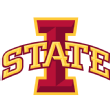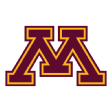A year ago at this time, some of the biggest surprises in the country were starting to cement themselves as national contenders. Michigan, picked No. 25 in the preseason AP poll, won its first 11 games of the season and was clearly a Final Four threat midway through the season. Alabama hadn’t quite hit its stride just yet, but the Crimson Tide would win at Tennessee on Jan. 2 and make a statement; the team picked fifth in the preseason SEC poll wound up winning the league.
Not all surprise teams last, though. Virginia Tech entered the New Year at 8-1 with wins over Villanova and Clemson — the Hokies would back into the NCAA tournament following a COVID pause in February and lose in the first round as a 10-seed. Missouri started 13-3 with wins over Alabama, Illinois, Tennessee, Arkansas and Oregon — but the Tigers lost seven of their final 10 games and lost in the first round of the dance.
Do this year’s nonconference surprise teams have what it takes to remain in the national conversation all season? We asked the college coaches who have faced them thus far.
There are plenty of surprise teams that didn’t make the cut here — Providence, Seton Hall, San Francisco, Wisconsin, TCU — but we decided to focus on the three biggest ones who were unbeaten entering Wednesday night. And then we took a quick look at three teams picked near the bottom of their respective leagues who have gotten off to a hot first month and hope to sustain it.
0:20
LSU’s Tari Eason turns the corner on his defender and throws it down to put the Tigers up seven in the final seconds.

Preseason: Sixth in preseason SEC poll, 37th in votes in preseason AP poll
Now: 12-0 (0-0), No. 17 in the AP poll
What they do well
Simply put, LSU is elite defensively. Entering Wednesday night, the Tigers ranked No. 1 in adjusted defensive efficiency at KenPom, also sitting atop the rankings in effective field goal percentage defense and steal percentage. They’re in the top 20 nationally in defensive turnover percentage, 3-point defense, 2-point defense and block percentage.
“They’re different,” one coach said. “You’re going to see pressure. 2-2-1. They’re not running and jumping a whole lot or trapping you, it’s just pressure. But they don’t give up anything easy out of it. And then you get in the halfcourt and they’re gonna switch. It makes it difficult to run your stuff. The looks that would normally be there are not there. You become really reliant on making individual plays. But they have length and athleticism, which bothers you. They’re committed to that end of the floor.”
Will Wade’s team hasn’t allowed a single opponent to come close to one point per possession this season, with Penn State leading the way at under 0.93 points per possession.
“Nobody else defends like they do,” an opposing coach said. “They’ve got size at the rim. Length. They have mobile bigs that can switch onto guards. They’re pressing you in the halfcourt and fullcourt, but then you throw the ball into the post, they double you, and that’s another form of pressure. They keep the floor small, they don’t get stretched defensively, it helps them guard the 3-point line so they can get there to contest.”
Potential vulnerability
While LSU might have the best defense in the country, its offense isn’t nearly at that level. The Tigers had scored fewer than one point per possession in three of their last four games entering Wednesday night, and they’re shooting just over 30% from 3-point range, which ranks in the bottom 75 nationally.
“Are they going to be able to consistently make shots, night-in and night-out?” one coach wondered. “If they can’t turn you over and don’t block your shot, you can score — but more importantly, where are their points going to come from if they don’t do that? If they had [injured Illinois transfer] Adam Miller, oh boy. But they don’t have that different dimension in the halfcourt. The Cam Thomas, Javonte Smart, Skylar Mays [type] … they don’t really have that.”
One coach said one key to scoring on the Tigers is having multiple shooters, to spread them out and make it difficult to trap in the halfcourt. Belmont, Penn State and Ohio all hit double-digit 3s against LSU, but none of the three shot better than 33.3% from 3.
“Anybody that shoots it at a high level, multiple guys that can shoot it [can challenge LSU],” he said. “That will get them a little more spread out, naturally.”
How good are they?
“I think they’re a top-four SEC team. I think they’re definitely a Top 25 team. It’s difficult to prepare for. Defensively, I think they’re as good as we’ve played. They’re just different, man. It’s weird. You watch them and it’s just a little 2-2-1. But it’s really good. The teams that will beat them are teams that can handle their pressure, then flow into offense and play. They want you in late-clock situations.”

Preseason: Tied for fourth in the preseason Pac-12 poll, closer in votes to eighth than third
Now: 11-1 (1-0), No. 6 in the AP poll
What they do well
Arizona has been elite at both ends of the floor through the first month and a half of the season, but most of the focus from opposing coaches is on the Wildcats’ offense. They play free, they play fast, and they can hurt you in a variety of ways. Entering Wednesday night’s game against Tennessee, they were No. 14 nationally in adjusted offensive efficiency, ranking in the top 15 in effective field goal percentage, offensive rebounding percentage and 2-point percentage.
“There’s two things that they do at an elite level. One of those things is their transition offense,” one opposing coach said. “Whether it’s a made shot or a missed shot. They’re just as good on bad shots as they are on misses. We knew it was coming, we prepared for it, we tried to be extreme about it. But it’s just different.
0:23
Bennedict Mathurin gets out in transition and throws down a ferocious one-handed jam.
“All those guys, whoever pushes it, [Kerr] Kriisa, [Justin] Kier, [Bennedict] Mathurin, they all make the right play in transition. They throw lobs, they play over the top to the post running the floor, not as many people are doing it in college basketball these days. The other thing is it’s not just their guards. [Azuolas] Tubelis doesn’t defensive rebound a ton — he takes off. He makes sure they got it under control and he’s gone. He’s a sneaky runner. He’s jogging and then he suddenly leaves the dude he’s running with.”
Arizona’s ability to generate second chances is also impressive. As mentioned, the Wildcats are one of the best offensive rebounding teams in the country — and they’ve done it in big spots, too. In the road win at Illinois, they grabbed 16 offensive boards. Foul trouble — and officiating ranging from highly questionable to objectively bad — was a huge factor in Wednesday’s loss, but Tubelis and Christian Koloko had just 10 combined points, and the Wildcats had only seven second-chance points. Had Arizona converted a few more of its 10 offensive boards, the Wildcats might still be unbeaten.
“They’re just too big. Whether it’s Tubelis or Koloko, who does it with length, or it’s [Oumar] Ballo, who is just big,” one coach said. “And then Mathurin is an elite offensive rebounder for a guard. They just kind of find ways to get it. It’s 8-to-12 extra possessions a game that makes such a big difference.”
At the other end of the floor, Arizona is one of the best at defending the rim. The Wildcats are eighth nationally in adjusted defensive efficiency, but they’re No. 1 in 2-point percentage defense and rank in the top five in block percentage. Koloko’s development into one of the premier defensive big men in college basketball has been a huge key for Arizona.
0:21
Azuolas Tubelis gets up for alley-oop dunk vs. Oregon State Beavers
Potential vulnerability
On paper, there are very few deficiencies for Arizona — but the Wildcats aren’t a great shooting team from the perimeter. They rank outside the top 100 nationally in 3-point percentage and only two players (Mathurin and Kriisa) make more than one 3-pointer per game. In Wednesday’s loss in Knoxville, they shot 9-for-27 from behind the arc.
“Kriisa can really shoot, but Mathurin can be hit-or-miss. He can go 1-for-7, 2-for-7,” one coach said. “I don’t believe in Tubelis’ shot, you don’t need to guard him on the perimeter.”
One coach said the continued development of Dalen Terry as a glue guy at both ends of the floor could determine their ceiling.
“He can be really suspect from the perimeter as a shooter. He’s not a good shooter but he takes 3s,” the coach said. “He can be so solid, but if he can just buy in to being a really good defender, only taking the occasional 3 — and then be a driver or cutter, that’s when they’ll be really good.”
How good are they?
“There’s nobody playing better than them besides maybe Baylor, and I’m not sure Baylor is a better team than them. They’re a legit Final Four, national title contender. And it blows my mind to say that, because you go down the roster, and it’s like, he’s OK, he’s solid. They have one surefire pro in Mathurin, then Tubelis maybe, Koloko maybe. It’s not like some of these rosters where it’s six NBA guys. But they all fit together, you can tell they want to win. They have a short rotation, they enjoy playing together.”
2:15
Gabe Kalscheur scores 30 points leading Iowa State to the big upset win over No. 9 Memphis.

Preseason: Picked last in preseason Big 12 poll
Now: 12-0, No. 9 in the AP poll
What they do well
Entering the season, T.J. Otzelberger’s reputation was not that of a defensive guru. At South Dakota State, his teams played fast, took a lot of 3s and were very efficient on the offensive end of the floor. At UNLV, the tempo slowed, but the offense was still better than the defense, and his teams still took a ton of shots from behind the arc.
This season, it’s defense. The Cyclones rank No. 6 nationally in adjusted defensive efficiency, sitting inside the top 10 in effective field goal percentage defense, defensive turnover percentage and 3-point defense.
“They’re athletic, they’re physical and they play very hard,” one opposing coach said. “Every possession, they make it really difficult to score on them. That’s basically them in a nutshell. They keep things on the side of the floor, ice and down everything [ball-screen coverages intended to keep the opposing ball handler angled toward the sideline]. They post trap every single time. With their athleticism, they do stuff to make up [ground] on scramble situations. They mix up ball-screen coverages. They’re old, physical and athletic. T.J. has them playing extremely hard.”
Offensively, the Cyclones are not relying as heavily on 3-pointers as previous Otzelberger outfits, but they have five or six guys who can make shots from the perimeter. They also have two Big Ten transfers in Izaiah Brockington (Penn State) and Gabe Kalscheur (Minnesota) who have put up 30 points in a game this season, and a dynamic freshman point guard in Tyrese Hunter.
“They have a lot of guys who have a lot of experience playing high-major basketball. Brockington, Kalscheur,” a coach said. “Tyrese Hunter has been up and down, but he’s talented. Caleb Grill is one of the keys to their team, another guy who can come in and make 3s. These guys have played against top teams, they’re able to make timely shots. They’re not selfish. They’re turning down shots to get other guys shots. Grill had it going against Creighton, they got him shots. Kalscheur had it going against Memphis, they got him shots. Another night it was Brockington. They do a good job of spreading it around. And Hunter gives them someone who can really score from the point guard position.”
Potential vulnerability
As good as their defense has been — and it’s been really good; no team has reached one point per possession on the Cyclones yet this season — their offense has had some really poor performances. They had just 47 points against Jackson State earlier this month, and also failed to break 70 points against Oregon State, Alabama State and Creighton.
“Do they have enough offensive firepower?” one opposing coach asked. “Big 12 games come down to the last four minutes. Can they make timely shots, can they do it against Big 12 athletes?”
Another opposing coach wondered whether other Big 12 teams will be able to match Iowa State’s experience, which has played a major role in the Cyclones’ hot start, or whether the veteran makeup will be as much of a differentiator later in the season.
“Experience has played a part in their start. That experience is key to having success, consistent success. They’ve seen all these battles,” he said. “[Tristan] Enaruna played in the Big 12 for two years. They don’t get shaken. They’re confident. Teams have had them on the ropes. But they’ve played in these types of venues. They have a lot of experience and maturity.”
0:40
Iowa State fans erupt as Tyrese Hunter converts the steal into a thunderous throwdown.
How good are they?
“I think their ceiling is probably fourth or fifth in the Big 12. And they can finish as low as 9th, because the margins are so small. Kansas, Baylor, Texas are the top three — so they’re probably fourth at best. But they could also finish low. I’ve watched TCU, they’re good. Iowa State probably doesn’t have the talent to finish top three and the margins are so small, they could finish ninth. Couple injuries or a few guys get sick, they can drop quickly. Their first six games in the Big 12, they can go 3-3, they can go 0-6. It’s just the way that league is.”
Three more surprise teams that haven’t cracked the top 25 (yet)

Preseason: Picked 13th in preseason ACC poll
Now: 11-1 (1-0), lone loss to LSU
Key to the rest of the season: In a down ACC, Wake Forest looks like it could be as good as the second- or third-best team in the league. The Demon Deacons have just one loss on the season, along with a 19-point road win at Virginia Tech to open conference play in early December. Steve Forbes has been heavily reliant on transfers, with Alondes Williams (Oklahoma) playing like an All-ACC player and Jake LaRavia (Indiana State) making an impact through the first month. Dallas Walton (Colorado) and Daivien Williamson (East Tennessee State) have also started every game, while Khadim Sy (Ole Miss) has started two games.
Forbes has a team that competes at both ends of the floor, pushes the tempo and is really efficient inside the arc. Williams is capable of taking over games, as evidenced by his 70 points in two games last week.
“They’re really good. Aside from their size, athleticism and talent, their ball movement and ability to shoot the ball is very underrated in my opinion,” one opposing coach said. “I think moving forward they have to keep doing things by committee. They’ll continue to score, but they have to keep defending the way they are — 41% from 2, 30% from 3 and forcing 15 turnovers a game is damn good.”
NCAA tournament team? LaRavia has missed the last two games, and a return for him will be key for upcoming road trips to Louisville and Miami. Given how weak the top of the league is, only Duke and perhaps North Carolina are clearly better than Wake Forest right now.
“If they stay healthy, they’ll hear their name called on Selection Sunday. They’re talented but Forbes is as good as any coach out there. He’s their ace in the hole.”
0:34
Isaiah Mucius drains the corner 3-pointer at the horn to lift Wake Forest past Charlotte.

Preseason: Picked last in unofficial preseason Big Ten media poll
Now: 10-1 (1-1), lone loss to Michigan State
Key to the rest of the season: Ben Johnson has done a tremendous job as a first-year head coach, guiding Minnesota to road wins at Michigan and Mississippi State, as well as a neutral-court victory over Western Kentucky. While other teams on this list have done it with high-major transfers, Johnson has mostly dipped into the mid-major ranks for his impact players. Jamison Battle (George Washington) has been one of the best transfers in the country, while Payton Willis (Charleston) is a great second option. Eylijah Stephens (Lafayette), Luke Loewe (William & Mary) and Sean Sutherlin (New Hampshire) have all played key roles.
The Gophers control tempo, they take care of the ball (for the most part; more on that in a second) and they have two big-time scorers in Battle and Willis. Do they have enough outside of those two to consistently win in the Big Ten?
“I think they have to find other ways to score beyond Willis and Battle,” one coach said. “If those guys don’t make shots, they can struggle.”
NCAA tournament team? The Gophers are perhaps the biggest surprise on this list, given the roster turnover last spring. And despite the impressive road win at Michigan, they’ve had a slew of close wins. While they did a great job taking care of the ball against Mississippi State, Michigan State and Michigan, they also just turned it over 28 times against Texas A&M-Corpus Christi.
“I don’t think they’re an NCAA tournament team,” one opposing coach said. “I don’t love their talent. They play very slow and that makes for a very small margin of error. And they can turn it over.”

Preseason: Picked last in preseason Big East poll
Now: 9-1 (0-2), lone loss to Loyola Chicago
Key to the rest of the season: The biggest thing might be getting healthy. The Blue Demons had their first two Big East games canceled due to COVID-19 issues, which resulted in forfeits according to Big East policy. That’s why they strangely have one loss overall and two losses in the Big East.
On the floor, Tony Stubblefield has the Blue Demons clicking. They’ve got plenty of size, they put pressure on teams defensively with their up-tempo offense and they have one of the elite players in the Big East in former Valparaiso transfer Javon Freeman-Liberty.
“They have two keys. The first thing is Javon Freeman-Liberty. Jalen Terry is their only other ball handler, so Freeman-Liberty has to be elite for them to compete at a championship level,” one opposing coach said. “The second thing is for them to get their physicality into the game. They have so much length and athleticism at every position on the floor and they’re at their best when that is on display. Blocking shots, pressure defense, creating turnovers, transition offense — especially off of turnovers — and offensive rebounding. When they get this into the game, they can compete with anybody.”
NCAA tournament team? They don’t have the signature wins of Minnesota or the high-major track record of Wake Forest’s transfers, but the Blue Demons’ leap forward has been hard to ignore. They also have a road win at Louisville, a home win over Rutgers and they took a very good Loyola Chicago team to the wire before losing.
If Freeman-Liberty gets consistent help and DePaul picks up where it left off before the COVID issues, the Blue Demons have a chance to at least fight for the top half of the Big East.
“They have the look of an NCAA tournament team,” one coach said. “They play a style of play that can travel, and they have elite size at every position on the floor.”
